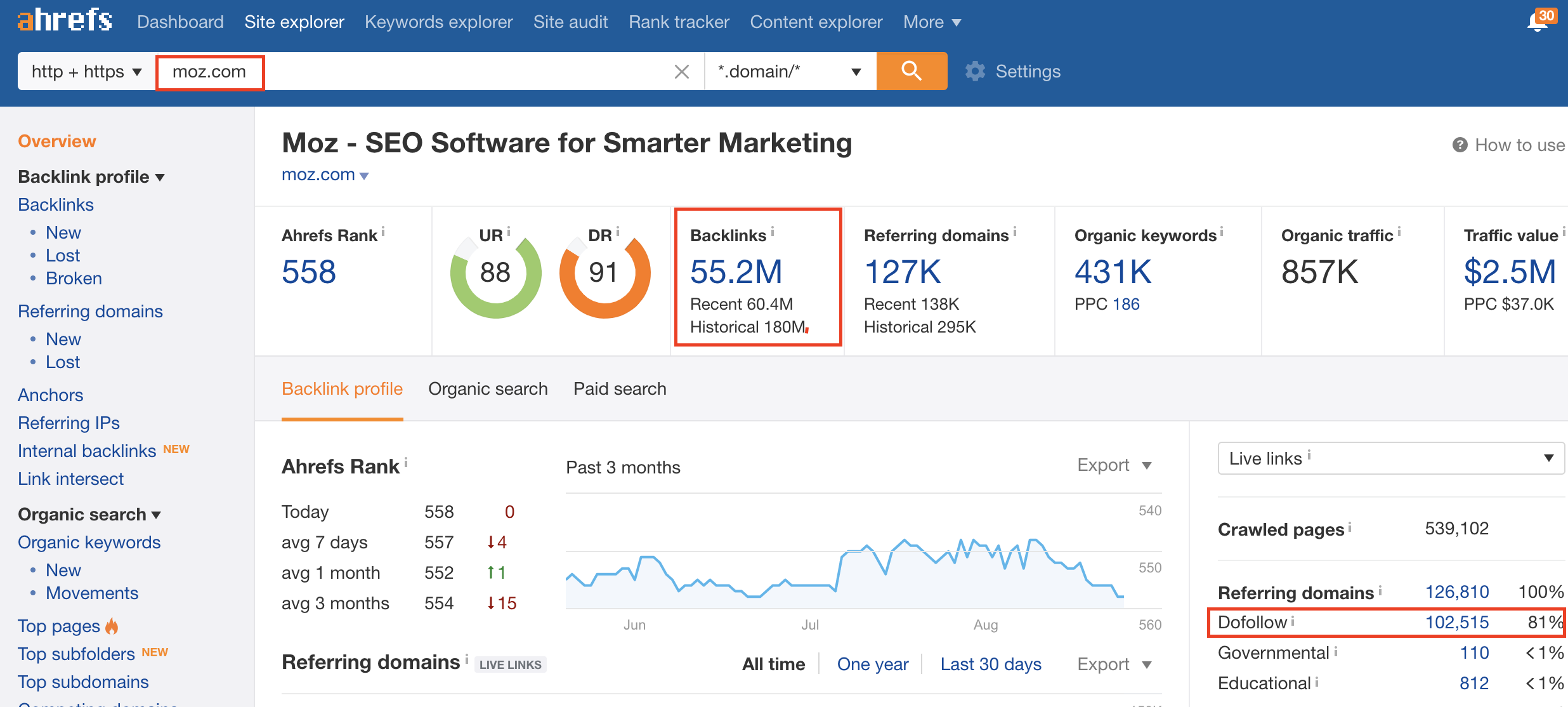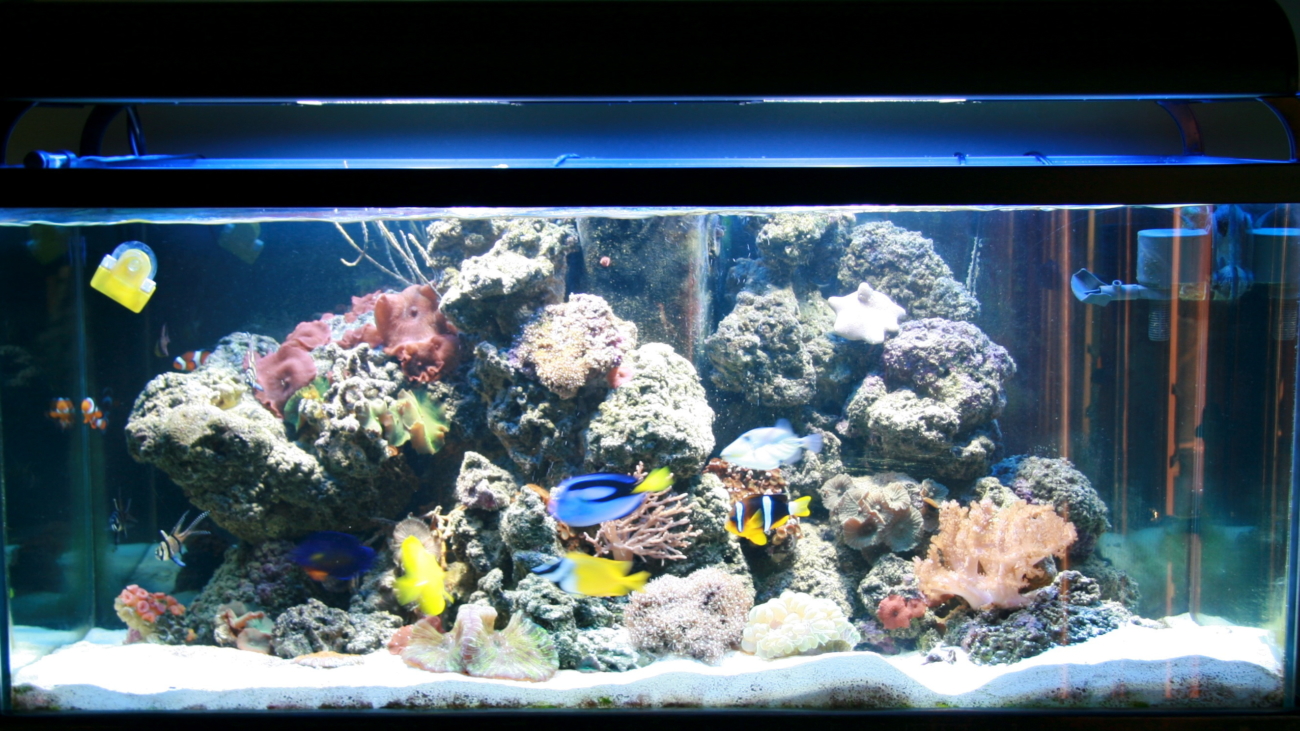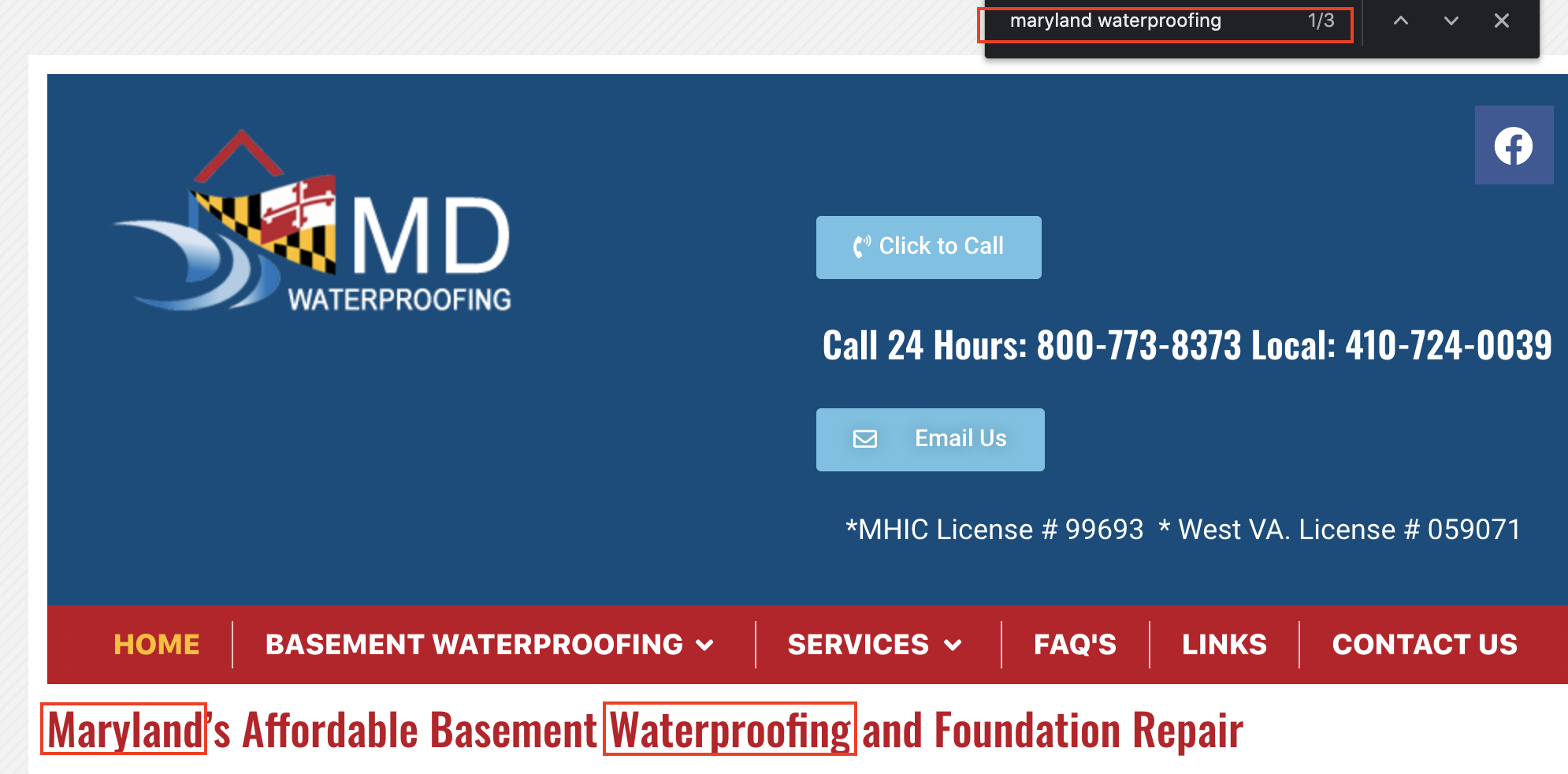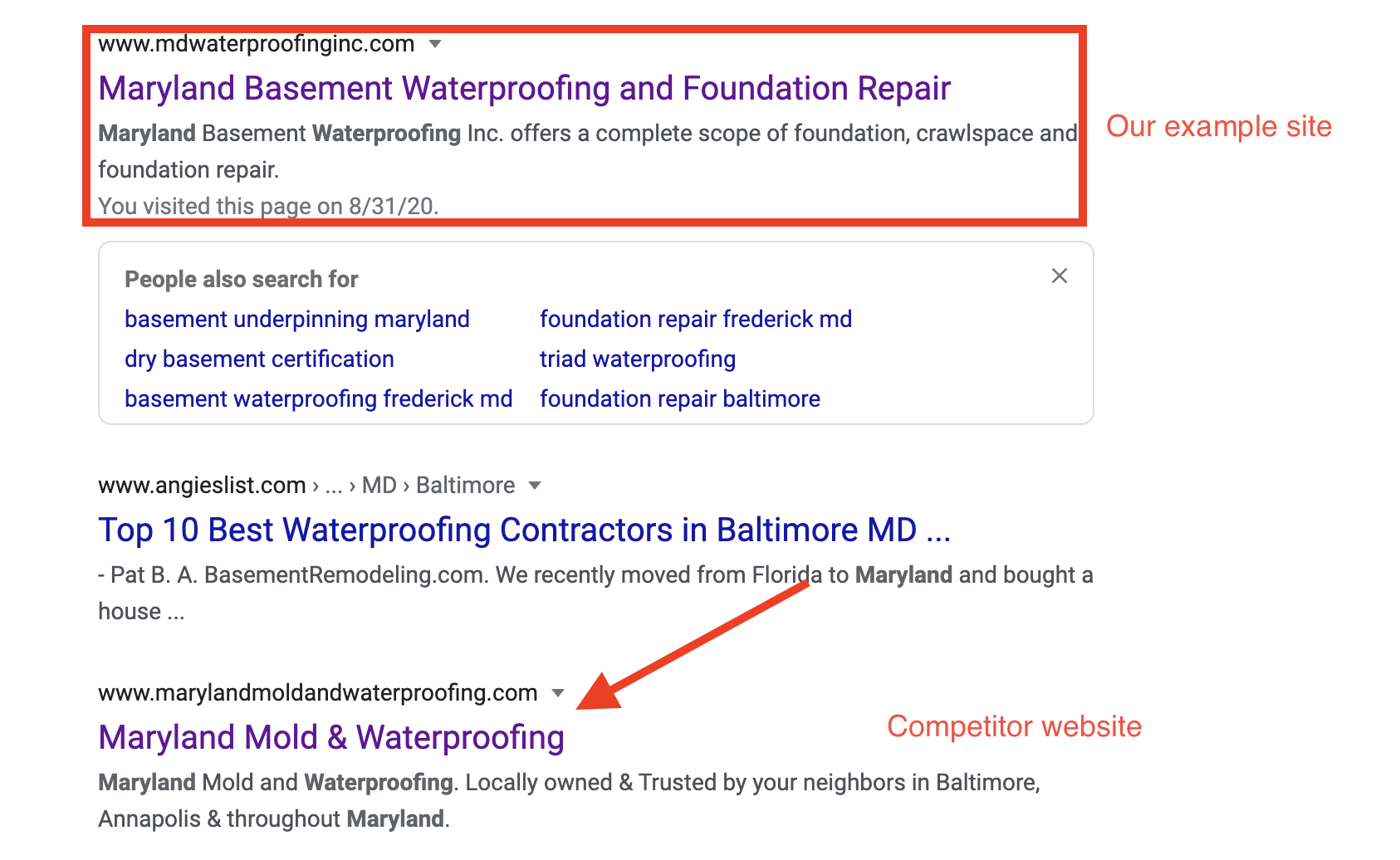So, you’ve probably landed on this guide because you’ve heard of backlinks and you heard they’re important but you need an in-depth example of what they are.
Before we get into exactly what backlinks are and show you some examples, it’s important to pay close-attention to this topic being that it is one of the most important ranking factors in Google.
There are not too many things that you have to get completely right but if you make sure your backlinking strategy is in place and execute on it properly, it can mean higher and quicker rankings, which lead to more passive inbound leads for your business.
Backlinks are not the easiest to grasp if you are a beginner but we’ll break each component of a backlink down step-by-step, so even a complete beginner can understand these backlink SEO examples.
What Is A Backlink?
A backlink is a link that is connected from one page to another. If another website is linking to you, this means you have a backlink. Now there are all different types of backlinks, good and bad ones. Strong and weak ones. Natural and spammy ones.
So how do you make sure you are building the right type of backlinks to your website? Keep reading to find out.
What Is The Difference Between A Good Backlink And A Bad Backlink
A good backlink is a link back to your website from a website that Google deems authoritative and trustworthy. A bad backlink is a link from a website that Google sees as spammy.
When you build good backlinks from another site, to your site it not only looks great in the eyes of Google but it also has a number of benefits for your website.
When a bad backlink is built from another website to yours, it can actually hurt your rankings. When google sees a website as spammy, the Google algorithm also picks up any other websites that that website is linking out to and makes an association between the two.
Too many of these links from spammy websites can get your own site penalized by Google.
On the flipside, if you build enough good backlinks to your website, you’ll rank highly in Google for multiple keywords and have the chance to be found by hundreds of thousands of people monthly.
How Many Backlinks Do I Need To Rank?
This is one of those “it depends” answers.
But, let’s talk about exactly what it depends on.
When you are trying to rank for a keyword, one of the first things you should do is analyze how many backlinks it’ll take to rank for that keyword. The way to find this out is by looking at how many backlinks the other sites on page 1 have.
How We Find How Many Backlinks A Website Needs To Rank
What we like to do is take the sum of backlinks from the first 5 Google results and then find the average number of websites for each anchor text group.

We will then use this to guide our backlinking strategy.
Let’s talk about the 4 most important anchor text types.
Branded: The name of the brand used as an anchor text. Example: www.website.com
Generic: A generic word that is used for the anchor. Example: “Learn more”
Exact-Match: An exact match anchor is an anchor that uses the exact keyword that you are trying to rank for. For example: “Chicago Plumbing Service”
Partial-Match: A partial-match anchor is text that includes a variant of your main keyword. Example: “Plumbers that service chicago residents”.
How Do I Find These Backlinks?
Backlinks for your website can be found across the entire internet. But especially with sites that are directly relevant to your niche.
So you may be asking now, “how can I find all of these websites quickly?”
There are a few search phrases you can type into Google and it will bring up all of the websites in your niche that will accept linking back to you from their site. Here is a list of them.

Use a tool like hunter.io, to easily find the email addresses of those blogs that accept backlinks to your site. Once you have your email it is time to craft your pitch.
How Should You Pitch A Website On Securing A Backlink From Them?
There are many methods and strategies you could use to secure backlinks from another site to yours. But the most common method used are guest post.
A guest post is an article that is written by you that is placed on someone else’s website, with the intention of linking back to your site and creating a backlink.
Although it is possible to build a good amount of backlinks through mass emailing, it is also a really good idea to try and build a relationship with blog owners. While this may take longer, it will improve your acceptance rate.
You can use this template when reaching out to blog owners.
Subject: Article placement for [target website name]
Hi [target name or ‘there’],
I heard that you accepted guest posts and I was just checking in to see if you were still accepting them?
I’m a writer that writes about a range of topics in the [your niche] space. I’m looking to expand my name in this area and Guest Posting has been a great way for me to do that.
Do you still accept them?
Here’s some of the content that I’ve written in the past:
[2-3x Previously Well Written article URLs]
If so, I’d be interested in hearing what your requirements are.
Kind Regards,
[your name]
Try to send 20 of these emails per day and you should be able to close a few people within your first month of outreach.
How Long Does It Take For A Website To Rank After It Has Gotten Backlinks?
Google can take anywhere from 2-6 weeks to pick up a new backlink that your site has acquired. Once it does, depending on the quality of the backlink and the anchor text, you should see your website, slowly begin to move up the serps.
How many backlinks it takes to rank all depends on the level of competition of whichever keyword you are trying to rank for. Some keywords are harder to rank for than others so the key to quick rankings would be to find easy-to-rank for keywords and try to rank your website for those first.
If you are competing with higher authority websites, it can take as long as a year and a half to rank alongside them and capture some of the traffic.
How To Check Your Backlinks
There are multiple tools that can be used to check your backlinks. Our favorite is Ahrefs because it gives a complete breakdown of how many backlinks you have and exactly where they are coming from.
Let’s take a big website like Moz.com. Ahrefs shows that Moz.com has 55.2 million backlinks. It also shows that 81% of those backlinks are dofollow.

Dofollow backlinks are links from other sites to yours that pass as “link juice”. Which just means some of that website’s power and authority is passing to you, ultimately helping you rank higher. All backlinks are dofollow by default.
Nofollow links are links that are coded to tell Google not to pass any power from an owners website to yours. These links are great for “anchor pillowing” and making a backlink profile look natural.
How Can I Get Backlinks For Free?
Conducting some blogger outreach like we explained above is one of the best ways to get free backlinks from other blog owners. You just need to make sure you can really provide value to their audience by creating great content for their readers.
Another backlinking strategy that is highly effective is broken link building. This means that you are reaching out to a blog owner that has a broken link on their website that used to lead to someone else’s website.
It’s possible to write a great piece of content (something directly related to what the broken link was ranking to) and ask the blog owner to replace the broken link with a link back to your site instead.
This style of outreach is so effective because it’s almost like you’re doing the blog owner a favor by telling them that they have a broken link.
A broken link can actually negatively impact a website’s ability to rank. So letting them know makes it seem like more of a favor for them than it is for you.
Start Building Links
If you’ve made it this far, you know completely know the basics of link building and what backlinks are.
It’s not hard for outreach to become extremely complicated if not done using a process. Once you have a process for reaching out to new blog owners, you can start to acquire multiple backlinks per week.
It’s not easy to create an outreach process, but our team has done this for a number of our clients and are able to build dozens of backlinks per month in order to achieve high rankings.

















